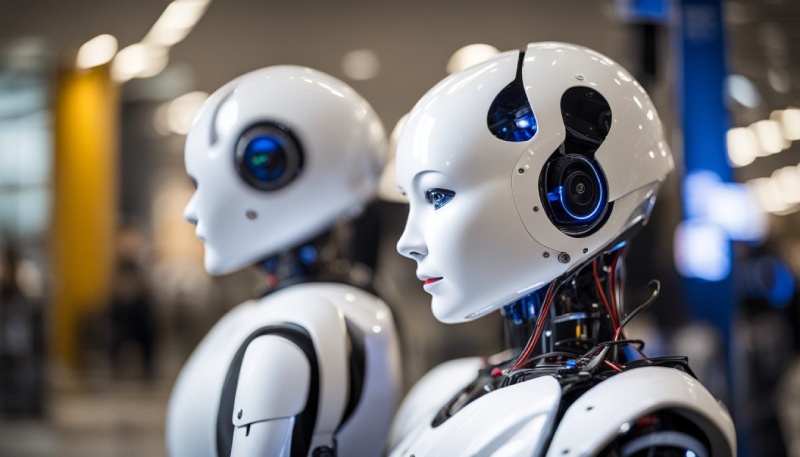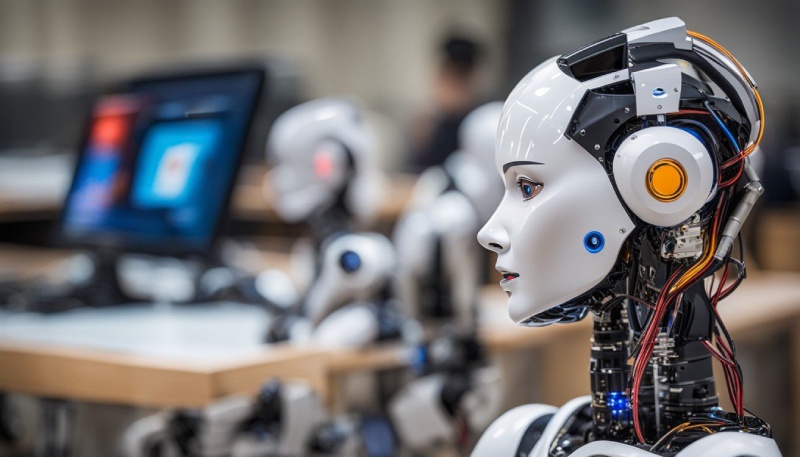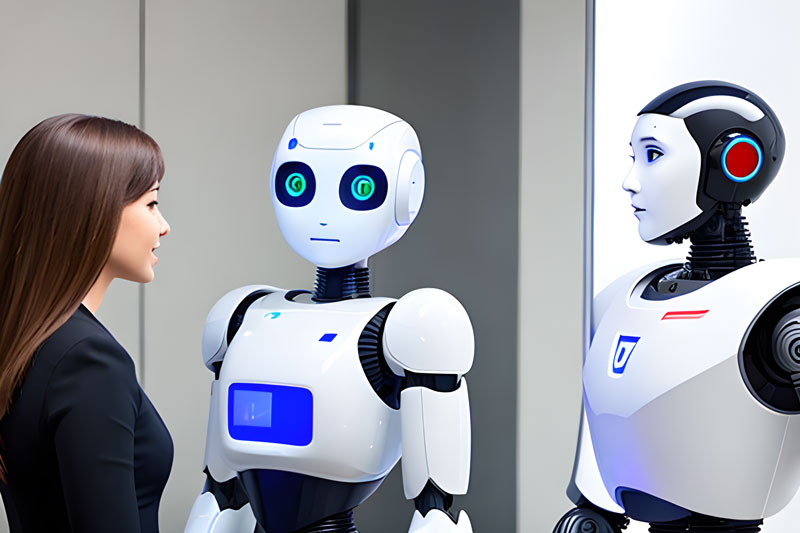The world of robotics has witnessed remarkable advancements, and one of the most intriguing categories within this field is humanoid robots. Humanoid robots are designed to mimic human-like characteristics, both in terms of physical appearance and motion. These robots have gained significant attention due to their potential applications in a wide range of fields, from healthcare and entertainment to research and education. In this exploration of the “Most Famous Real Humanoid Robots in the World,” we will delve into some of the most renowned and pioneering creations in this domain, highlighting their capabilities, contributions, and the impact they have had on the world of technology and robotics.
Top 10 Most Promising Uses of AI in Health Care Industry
Top 20 Jobs that are Being Replaced by AI Right Now
Top 10 Free Midjourney Alternatives | Free AI Image Generators
you may be interested in the above articles in irabrod.

Most Famous Real Humanoid Robots in the World
Most Famous Real Humanoid Robots in the World
Humanoid robots, designed to mimic the human form and capabilities, have long been a fascination in the world of technology and robotics. They represent a remarkable fusion of mechanics, artificial intelligence, and engineering. Below, we introduce and explain some of the top most famous humanoid robots in the world, each with its unique contributions and capabilities:
1. ASIMO (Advanced Step in Innovative Mobility):
Created by Honda, ASIMO is one of the most iconic humanoid robots. Standing at 4 feet 3 inches, it was designed to be a multi-functional mobile assistant.
ASIMO can walk, run, climb stairs, and even pour a drink. It’s equipped with advanced sensors and AI to interact with humans. Though Honda ceased production in 2018, ASIMO has left an indelible mark on the development of humanoid robots.
ASIMO, developed by Honda, is one of the most iconic humanoid robots to date. Its name stands for “Advanced Step in Innovative Mobility,” and it represents a culmination of Honda’s engineering excellence. ASIMO is known for its advanced mobility, featuring the ability to walk, run, climb stairs, and even dance with exceptional balance and coordination. It is equipped with sensors and cameras for navigation, object recognition, and interaction with people. ASIMO has been a prominent ambassador for robotics and artificial intelligence, showcasing the potential for humanoid robots in various applications, from assisting individuals with limited mobility to inspiring the next generation of engineers and scientists.
2. Sophia:
Sophia is developed by Hanson Robotics and has gained immense popularity for its human-like appearance and conversational abilities.
Sophia utilizes AI to understand and respond to human conversations. It has been granted citizenship in Saudi Arabia and has participated in interviews and discussions on various global platforms. Sophia demonstrates the progress of AI in understanding and mimicking human behavior.
Sophia, created by Hanson Robotics, is a renowned humanoid robot celebrated for its human-like appearance and sophisticated AI capabilities. With a face that can express a wide range of emotions, Sophia’s primary distinction is her ability to engage in conversations with people. She utilizes natural language processing and machine learning algorithms to comprehend and respond to questions and comments. Although her responses are generated by AI, she provides the impression of meaningful interaction, making her a prominent figure in the field of social robotics. Sophia’s appearances at numerous global events and interviews have elevated the discourse on the potential for AI and robotics to interact with humanity on a more personal level.
3. Atlas:
Boston Dynamics’ Atlas is a dynamic and highly mobile humanoid robot known for its remarkable agility.
Atlas can perform backflips, somersaults, and various complex tasks. It’s designed for a range of applications, including search and rescue missions, demonstrating the potential of humanoid robots in real-world scenarios.
Atlas, developed by Boston Dynamics, is a remarkable humanoid robot recognized for its extraordinary physical capabilities. This bipedal robot can traverse a variety of terrains and perform agile movements with exceptional balance. Its advanced sensor systems and complex control algorithms enable it to execute tasks with precision, making it valuable for applications like search and rescue missions or assisting in environments unsafe for humans. Atlas represents a significant advancement in robotics, showcasing the potential of machines to navigate the physical world and handle challenging tasks. Its versatility and dexterity underscore the evolving role of humanoid robots in real-world scenarios, including disaster response and industrial automation.
4. NAO:
Aldebaran Robotics’ NAO is a small, versatile humanoid robot designed for research and education.
NAO is used in numerous research and educational settings. It’s programmed to recognize and interact with humans, making it an ideal platform for studying human-robot interaction, artificial intelligence, and robotics programming.
NAO is a versatile and widely recognized humanoid robot created by SoftBank Robotics. Standing at just over 2 feet tall, NAO features 25 degrees of freedom, a wide range of sensors, and a friendly, human-like appearance. It’s been designed to interact with people, recognize faces, understand and generate speech, and perform a variety of tasks, making it a popular choice in research, education, and entertainment. NAO’s capabilities extend from helping children with autism to research in human-robot interaction and artificial intelligence, with a user-friendly software development kit and a thriving community of developers and researchers worldwide.
5. iCub:
iCub is a collaborative project by several European universities and research institutions, focusing on cognitive development in robots.
iCub is designed to resemble a 3-year-old child and serves as a platform for studying human cognition. It can learn through interaction and has numerous sensors to perceive and interact with its environment, contributing to research in AI and cognitive science.
iCub, developed by the RobotCub Consortium, is a highly advanced humanoid robot designed to mimic the cognitive and physical abilities of a young child. Standing at about 3.6 feet tall, iCub has 53 degrees of freedom and is equipped with a comprehensive sensor suite, including cameras and tactile sensors on its hands. Its design, including head and eye movements, facilitates human-like interactions and research in various fields, especially cognitive development and artificial intelligence. iCub has become a valuable tool for studying human cognition, machine learning, and neuroscience, contributing significantly to our understanding of how robots can emulate human-like capabilities and potentially assist humans in various tasks and environments.
6. Pepper:
Pepper, developed by SoftBank Robotics, is a social humanoid robot designed to interact with people in various environments.
Pepper can recognize emotions and engage in conversations. It has found applications in retail, healthcare, and entertainment, showcasing the potential of humanoid robots to enhance customer experiences.
Pepper, developed by SoftBank Robotics, is a pioneering humanoid robot known for its interactive and social capabilities. Standing at 4 feet tall, Pepper is equipped with advanced sensors, cameras, and voice recognition technology, allowing it to perceive and engage with humans. It’s designed to recognize emotions and engage in conversations, making it a valuable addition to industries like retail, healthcare, and hospitality. Pepper can assist customers, provide information, and even offer companionship, demonstrating the potential of humanoid robots in enhancing human experiences. Its open-source platform encourages developers to create new applications, expanding Pepper’s utility and making it a versatile and adaptable robot.
These humanoid robots represent a convergence of AI, robotics, and human-like design. They’ve made significant contributions to fields such as research, education, customer service, and entertainment. Their development continues to push the boundaries of what robots can achieve, promising a future where humanoid robots become integrated into our daily lives in various roles.
Conclusion
In conclusion, the world of robotics has been forever transformed by the development of real humanoid robots. These creations, inspired by the human form, have pushed the boundaries of what technology can achieve. They’ve ventured into diverse realms, from serving as companions for the elderly to making breakthroughs in space exploration. The most famous humanoid robots, like ASIMO, Sophia, and Atlas, have captured our imaginations and inspired innovation across various industries. As technology continues to advance, we can only anticipate even more astonishing feats from these mechanical marvels. With their potential for revolutionizing fields like healthcare, communication, and entertainment, humanoid robots are sure to play an increasingly significant role in our lives in the years to come.







